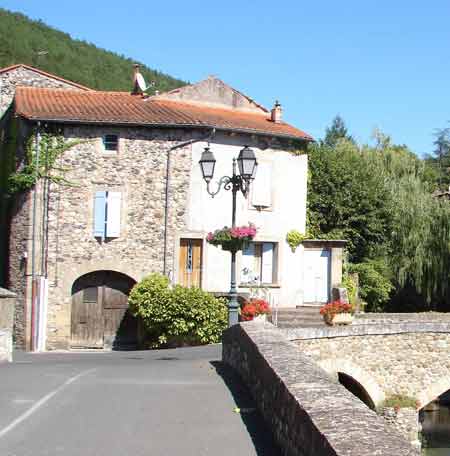FORMER TRADES AND OCCUPATIONS
THE OLIVE OIL MILLS

Before vines grew to encompass the majority of the region’s fertile plains and sunny hillsides, the distinctive silvery green leaves from the abundant olive groves spread across the landscape of the Lower-Languedoc.
Olives were harvested shortly after chestnuts, and in the Hérault department its 260 mills worked continuously until the end of March or the beginning of April.
In the winter of 1789, the department harvested 45,000 hectolitres of olive oil. Thirty-five years later, it was just a third of that amount and today it is almost nil.
In the 18th Century, Lunas had a modest olive oil mill, belonging to a Mr DE PEYROTTES from Cazilhac that only processed olives from the nearby surroundings.
It wasn’t until 1848 when Henri MOUYSSET from Sénégra moved to Lunas, on his marriage to Miss Emilie BOULOUYS that the olive oil business developed. He bought a house at the confluence of the Gravezon and the Nize and canalised the smaller stream. The energy created ran an oil mill capable of processing almost all of the Béziers region’s olive harvest.
The water from the Nize turned a hydraulic wheel, which then turned a millstone in a vat, where the olives, brought by their owners, were crushed and grinded into a sort of mash.
This mash was shoveled into sacks, called ‘cradles’ and then taken to an oil press where boiling water was poured over them and using the strength of four men they were pressed for an hour.
The liquid
collected from the pressing had to rest for the oil to rise to the surface
of the heavier water. A ‘collector’ then drew off the oil with a special
copper spoon.
The rest of the liquid was poured into a stone vat called a ‘hell’, where after five or six days a second quantity of oil could be drawn, which was very full flavoured and strong.
The water that remained was returned to the river. The owner of the olives was often present during the whole process and at the end would return home with his oil. The best quality was from the first pressing and that from the ‘hell’ could be consumed if mixed with sunflower oil or used as pig food if mixed with the waste from the ‘cradle’. Alternatively, it was used as an economic means of fuel.
The manpower
needed by the mill was relatively high with eleven people employed during
the high season:
- one miller to manage the mill
- two presses, each needing the strength of four
men
- one " collector"
- one stoker to deal with the boiling water as
required
Henri MOUYSSET
continued to manage the mill in this manner and was later followed by his
son-in-law Mathieu CIFFRE who, in turn, was followed by Charles CIFFRE. He
closed the mill in 1937, when the small olive harvests rendered the business
unprofitable.